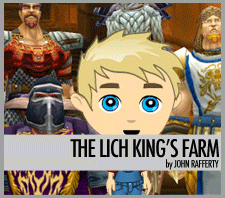TENDING TO A VIRTUAL FARM
Posted by Eric Bee | July 26, 2010
FarmVille has long been the focal point for social gaming, what with its millions of users, socially-relevant gameplay, and showcasing the gaming potential in Facebook. However, its recent foray into branded experiences in and around the game have introduced a whole new level of possibilities on the virtual farm, something that General Mills‘ organic food brand, Cascadian Farm, saw as a perfect fit for promoting their products.
Denuo was brought on board to help Cascadian Farm extend the already awesome idea to put organic crops into the game outward into both the Farmville community and Cascadian Farm’s community. Since both communities were made up of dedicated, passionate, and extremely vocal folks, the challenge was bringing these two groups together without alienating either side.
We considered the changing gaming space and how folks are playing with each other these days and, using three key things we know about gaming culture, built a couple of ways to mix the groups together to equally enjoy this unique experience.
GAMES ARE BRIDGES, NOT ISLANDS
For gamers, games aren’t just simple entertainment. Games help create the bridge to exploring their social structure, leading them into new experiences with friends and like-minded gamers online or solidifying their love for a franchise or character. The game is not the only aspect that comprises the person playing it, just as an in-game integration isn’t the only thing comprising a brand’s identity and ideals. Good advertising and marketing inspires curiosity and discovery, just like any good game does.
Usually, in-game ads work on a single level, appearing in a game as a piece of media specific to that title or in a wider, dynamic-placement buy. The “one-and-done” nature of integrations sometimes creates an “island mentality,” where gamers only see your brand for what it is in-game and aren’t inspired to learn more about the brand and the ideals behind the logo.
With FarmVille and Cascadian Farm, the game became a terrific opportunity to build a bridge between FarmVille players and advocates and Cascadian Farm’s loyal community; a common ground for one set to learn about the other. It wasn’t about changing behaviors or ideals in either group. We started that connection by building a virtual farm within FarmVille, made up of in-game elements, that used familiar crops and aspects of Cascadian Farm’s real farm, located in the northwest. It was about showing both sides the similarities and letting the communities discover each other on their own. The in-game elements served this purpose by reflecting the real-life farm, while utilizing the familiar aspects of the game to make a FarmVille player feel right at home. This wasn’t an insular experience designed to envelope the user with a single aspect of a brand. Instead, it was about letting those familiar aspects inspire both sides to check out the other, using the game as the main connection point for communities.
And boy, did they ever.
The Cascadian Farm fanpage lit up with FarmVille players, welcoming the addition of organic crops and their support for Cascadian Farm, while FarmVille players used Farmer Joe’s wall to support the unique crop and share how they use Cascadian Farm products in their home. By supporting and encouraging both sides to work with each other, both inside and outside the game, the communities ended up becoming fans of each other, via FarmVille.
THE TOURIST TRAP
Every game has its own quirks independent of gaming’s general culture. In Halo and Call of Duty, spawn-camping is frowned upon. In fighting games like Mortal Kombat, you don’t use the “throw” move because it’s universally viewed as cheap and unfair. Unwritten rules like these are forged and enforced by the community around a gaming genre or specific title, but are just as important as rules like “push start to play.” Wandering into a game’s space and community without a deeper knowledge than the layman can result in an almost instantaneous backlash. Worse still, if a brand is involved, the backlash is more often than not focused on them, defeating any purpose to an integration to begin with.
The idea of “tourist theory” is an easy way to generalize this. When you stake your claim for space inside a game, you’re also moving into a community and, like any good neighbor, the rules of the land must be understood and followed, especially if they come from the community themselves. If you’re not a friendly neighbor, you’re merely a tourist in unfamiliar territory; someone passing through and taking in the aesthetic for your own personal gain instead of establishing roots in the community.
When we approached the extensions to the FarmVille integration and the virtual farm, we made sure to adhere to the community-level niceties present in the game, from gifting other players who send us gifts, to not cluttering other people’s farms and walls with signposts and requests. It also helped that 90 percent of our office plays FarmVille on a regular basis and is familiar with the ins-and-outs of the game. Knowing the limitations and potential behind the integration, the game, and the extensions to them both, we were able to join the other players without causing a stir or seeming like unfamiliar faces. The focus became less about what we were doing in the game and more about how we could help other players out (which, as of this writing, our resident FarmVille expert is fulfilling “Bee Requests” for our neighbors).
IF IT’S SOCIAL, BE SOCIAL.
If you approach in-game opportunities without regard for your audience, you’re playing with fire. If you’re doing this in a social gaming environment and also not being social with your fellow players, you’re coating yourself in gasoline and juggling lit signal flares. Just as the main aspect of a first-person shooter is, y’know, shooting in first person, social games are based on the socially sharable aspects of the gameplay; aspects any brand playing in this space should make a primary factor in their integration.
It’s simple: when you’re in the game, be IN the game. Games offer a terrific opportunity to interact with consumers on their terms in a familiar, friendly space. Farmer Joe Cascadian, our profile created to tend to Cascadian Farm’s virtual farm in FarmVille, was never intended to be more than a proxy for playing the game; a necessary step to getting players to check out the virtual farm. Once the program began, though, Joe became the defacto representative for the brand and its game involvement, taking neighbor requests, asking and answering community questions, and generally becoming the in-game voice for the brand during the promotion. When you add in the various social functions we could accomplish in the game, maintaining our social presence within that experience became just as important as maintaining the virtual farm. Knowing how enthusiastic the FarmVille fans can be, we also established a “community event” over at the Cascadian Farm fan page. We did this to give both Cascadian Farm fans and FarmVille players an opportunity to connect and share content, based on questions and activities posed to the communities over Facebook.
It may take different forms across platforms, games, and gaming networks, but player interaction and a dedication to the social nature of the game is vital to an integration’s success. Whether it’s connecting in a third-party forum devoted to the title or reaching out to fans directly via connected consoles like PlayStation 3 and Xbox 360, playing along with your integration’s fans is a necessary step in the program. Otherwise, you’re just taking up space.
HAVE FUN
This might be the most important thing one can take away from being in a game. You’re in a videogame! Jeff Bridges had to get zapped by a billion-dollar laser to make this kind of thing happen, so count your blessings. The folks who are seeing your integration are seeing it while they’re taking a break from the business of the day, so make your integration just as fun and enjoyable for players to interact with.
Come check out our virtual Cascadian Farm at http://bit.ly/FarmerJoe and . Also, be sure to hit up Cascadian Farm’s fanpage at for our community events.
Leave a Comment
RSS feed for comments on this post · TrackBack URI


